Munich is world famous for the Oktoberfest and for its many breweries, its baroque churches, and its legendary football (soccer) club, which recently won the Bundesliga championship. A stay in the Bavarian capital allows you to go beyond the stereotypes and see its true colors.
Contents:
• Introduction
• Our favorite discoveries
• Don’t miss
• Where to eat
The name Munich comes from a monastery that was founded there in the 8th century. The Old High German word Munichen actually means monks.
The city, which was founded in 1158, was built on the banks of the river Isar, a tributary of the Danube.
Munich is Germany’s third most populous city today, after Berlin and Hamburg. The greater Munich area has a population of around 6 million. With its rich history, culture, and architectural heritage, the city is home to a large number of well-maintained monuments, churches, and museums.
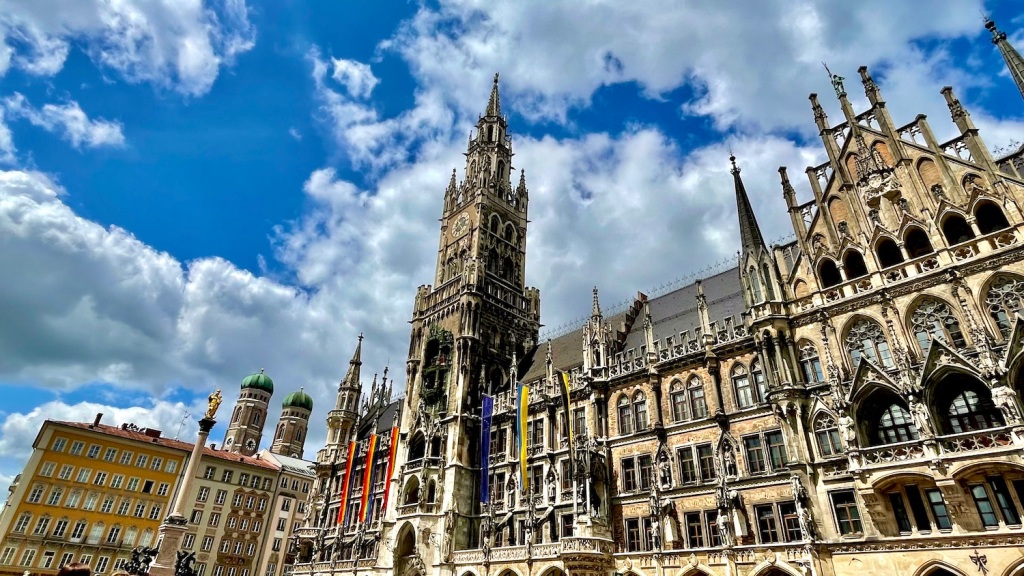
Even though the city is vast, Munich is perfectly suited for strolling around. The main sights are within a comfortable walking distance of each other, and just like in most large German cities, the public transport system and bicycle path network are both extensive.
You don’t need to go very far from the beating heart of the old town in order to explore the lesser-known neighborhoods, like Schwabing.
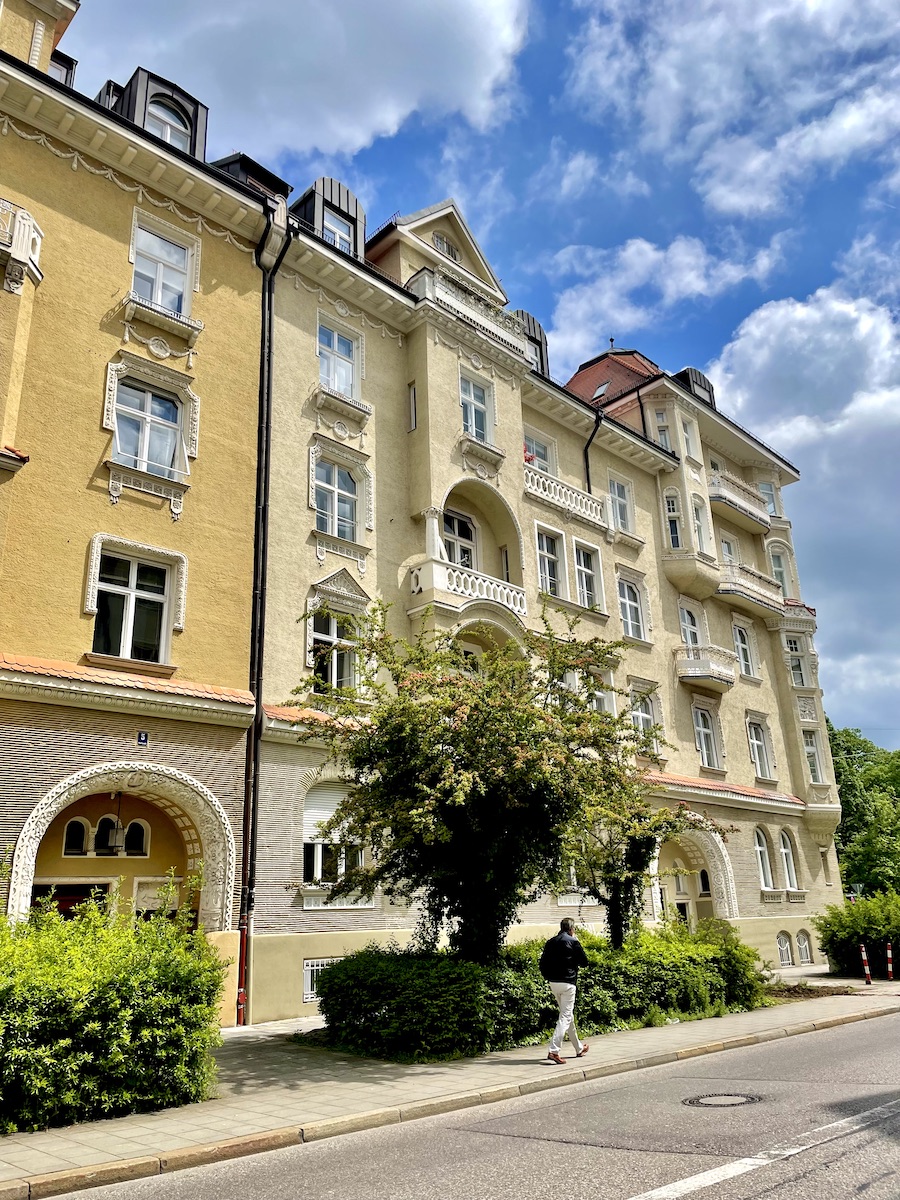
Munich is also a very green city, where nature is never far away. The Englischer Garten, an enormous urban park, stretches over an area of 4.2 km2 and is even larger than Central Park in New York City (3.4 km2).

From time to time, the architecture of the buildings or the atmosphere and appearance of certain neighborhoods give us the feeling of being in a completely different place. For instance, Munich’s large avenues and boulevards remind us of Berlin or Paris, the Feldherrnhalle on Odeonplatz was inspired by a Florentine loggia, and the towered brick buildings in Altschwabing are not dissimilar to certain areas of London.
Munich is very diverse and offers a wide array of activities. Everyone can find something to suit their interests, their mood, and the weather. Here is a selection of our favorite discoveries:
Our favorite discoveries
• Englischer Garten
• Viktualienmarkt
• The Residenz and Hofgarten
• Biergarten
• Siegestor
• Schwabing
• The Englischer Garten is more than just a green lung, it’s a lush island of greenery in the middle of the city.
Locals and tourists alike, along with walkers, cyclists, runners, dogs, waterfowl and even horses, coexist on the wide footpaths of this huge park. People come here to go for a walk or run, have a picnic, play a game of volleyball or football with friends, take a paddle boat tour, see the geese, mandarin ducks, and swans on the lake (Kleinhesseloher See), or enjoy a beer and a meal at one of the park’s Biergartens (at the Chinesischer Turm or at the Seehaus by the lake).
– The Monopteros offers a gorgeous view of the park, with the skyline of Munich’s buildings and bell towers in the background.

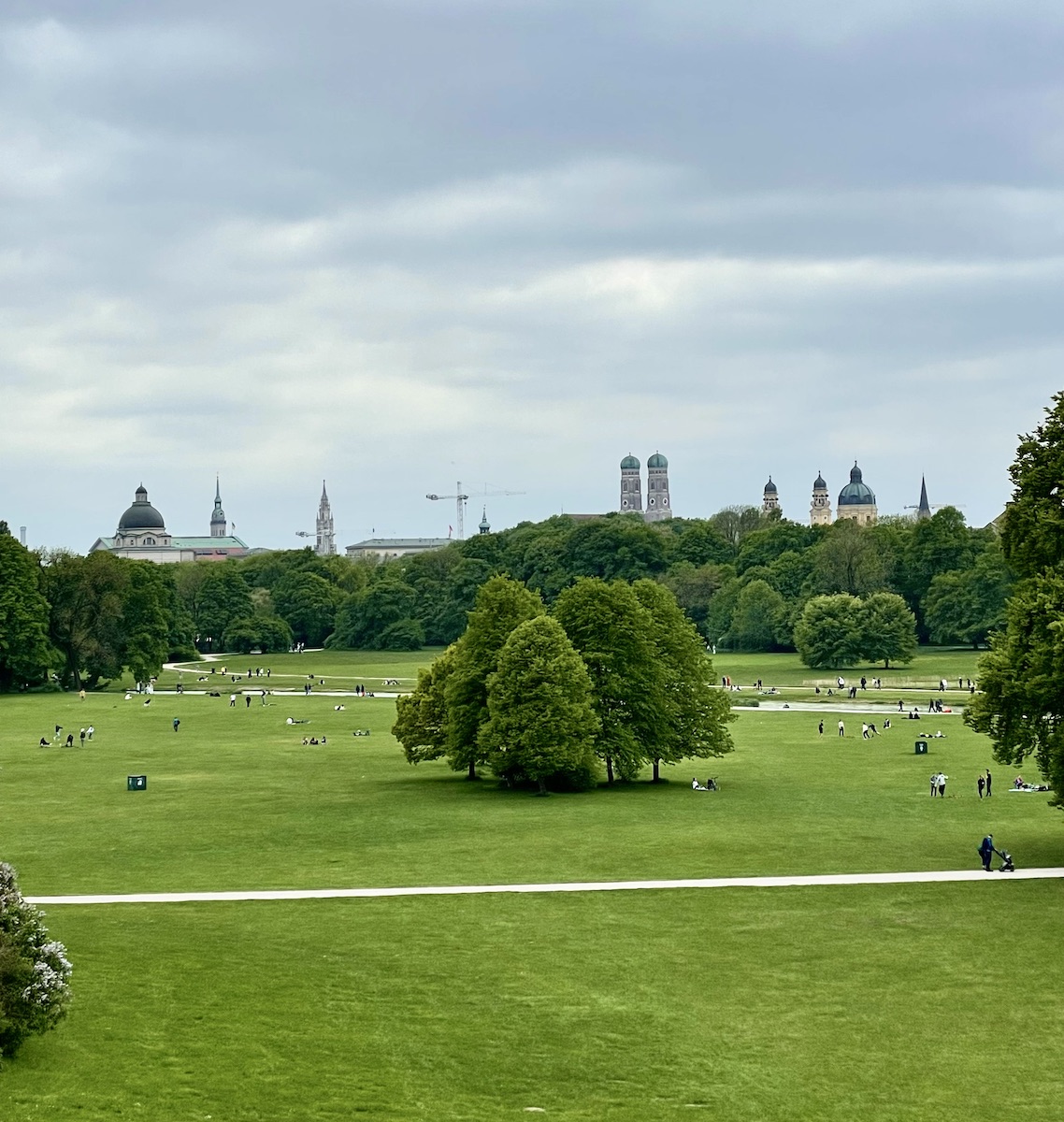
– The surfers of the Eisbachwelle and the kleine Eisbachwelle attract a crowd of curious onlookers.
These waves in the man-made Eisbach river at the south end of the park have been prized surf spots for over 50 years.
Our advice: start with the kleine Eisbachwelle before moving on to the Eisbachwelle (the surfers are more experienced, and the wave is more spectacular at the Eisbachwelle).
– The Biergarten at the Chinesischer Turm (Chinese Tower), with its traditional Bavarian orchestra playing live music, is extremely popular.

• The Viktualienmarkt (closed on Sundays and public holidays): a village market atmosphere where locals and tourists shop side by side, just a stone’s throw from Marienplatz, in the heart of Munich’s old town. The market is a hodgepodge of stalls and stands: greengrocers, florists, Mediterranean delis, butchers, cheesemongers, spice shops and pickle stalls. A sweet voice offers us white asparagus. A little further on, a mustachioed Bavarian man hollers, “Erdbeerrrren” (strawberries) while rolling his R’s.
We are intoxicated by the delicious scents of fresh fruit, spices, and flowers mingling between the stalls.
Bursts of laughter and merry voices float over from the Biergarten in the shade of the blossoming chestnut trees.
• The Residenz is the former residence of the house of Wittelsbach, who were once prince-electors, dukes, and kings of Bavaria. The first part of the palace was built in 1385, before other wings were added during the Renaissance and in the 19th century. The palace contains 130 rooms in the Renaissance, Baroque, Rococo, and Neoclassical styles.

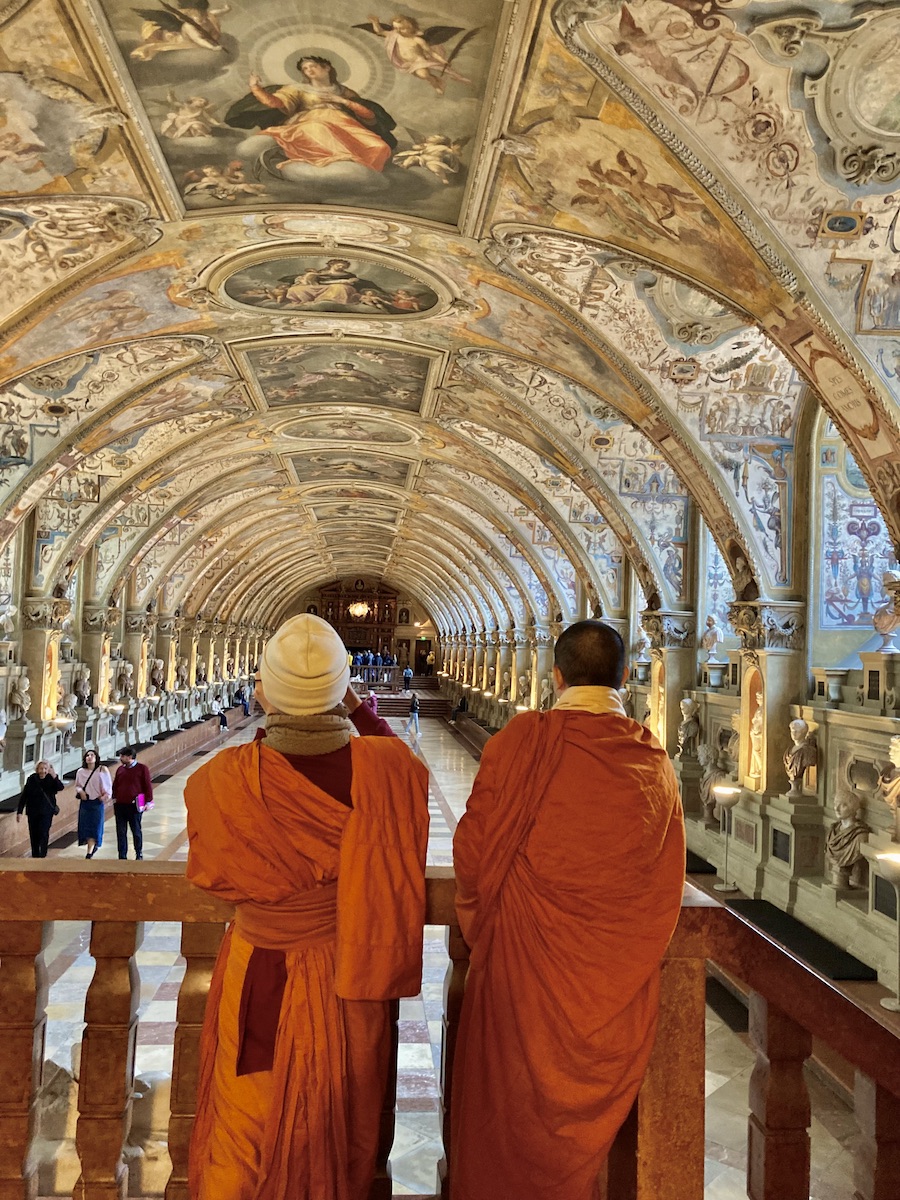
The Ancestral Gallery decorated with generations of Wittelsbachs, and the Antiquarium, lined with busts of Roman emperors, are both a must-see.
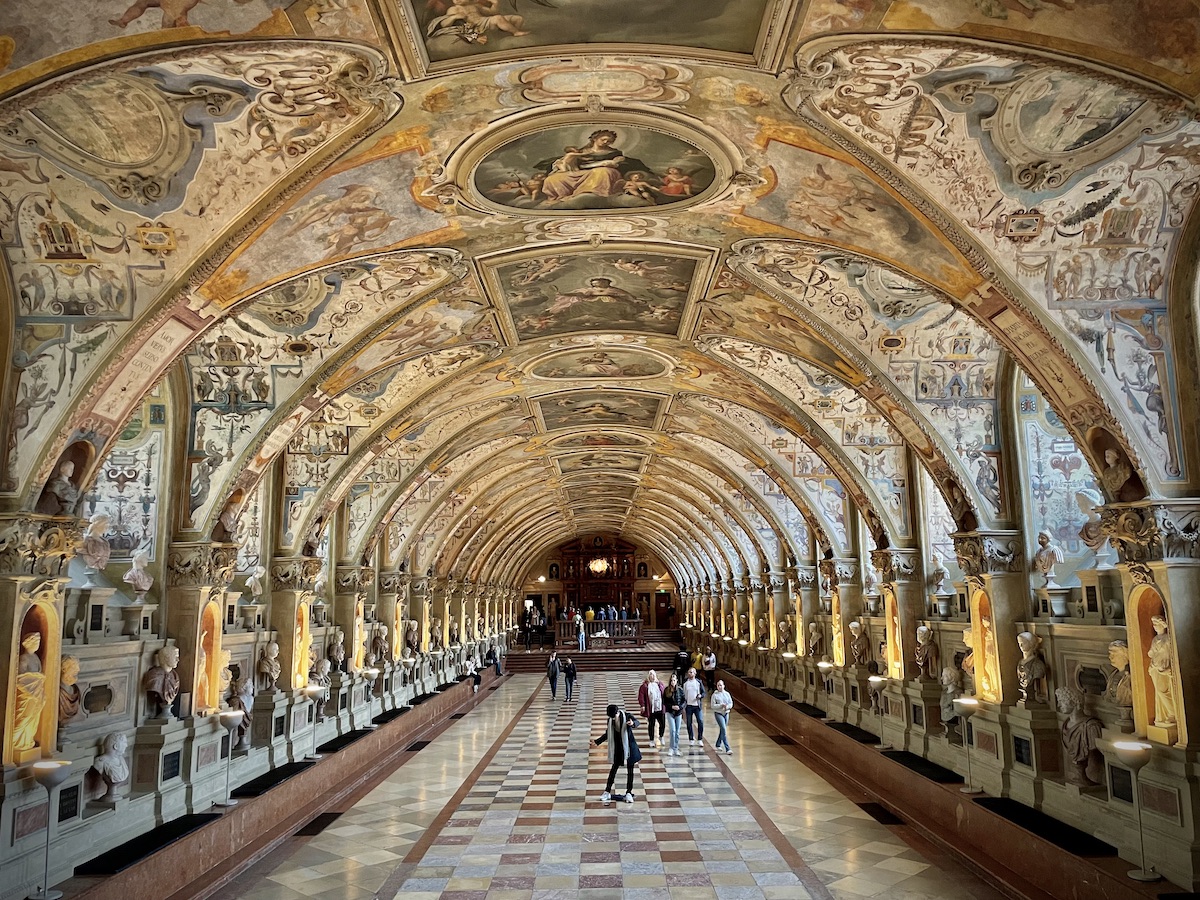
Our advice: opt for a morning visit to avoid the crowds.
Don’t miss (free entry): the succession of courtyards of the Residenz, which you can easily access from Odeonplatz, and the Hofgarten, a large park next to the Residenz.
Throughout the park, shaded lanes alternate with sunny paths. A large number of benches allow you to sit down for a while to enjoy the beautiful surroundings.

• Biergarten: authentic beer gardens are a typical part of the local lifestyle. While they attract tourists, they are particularly popular among locals, who love to meet up at these open-air bars as soon as the weather gets warm.

Biergartens generally serve their beer in Maß, large one-liter tankards, and offer a selection of local dishes.

You can also get smaller glasses, for example of Weißbier, a kind of wheat beer. There are fresh, hot Breze (giant pretzels) for sale, as well as a selection of non-alcoholic drinks. The wooden tables and benches seat around eight people, but if you are fewer than that, others might join you.

Our favorite: the Augustiner Keller near the central station (around 5000 seats) is Munich’s oldest Biergarten. It’s a huge terrace that hasn’t changed since 1895, with beautiful chestnut trees and a lovely, peaceful atmosphere. There are tables available inside as well. The Augustiner Keller is open every day from 10 AM to midnight.
Most beer gardens offer two options: table service (Bedienter Bereich) or self-service (Selbstbedienung). Our advice: if you’re in the table service area and you don’t want your server to bring you another beer, put your beer mat on top of your tankard.
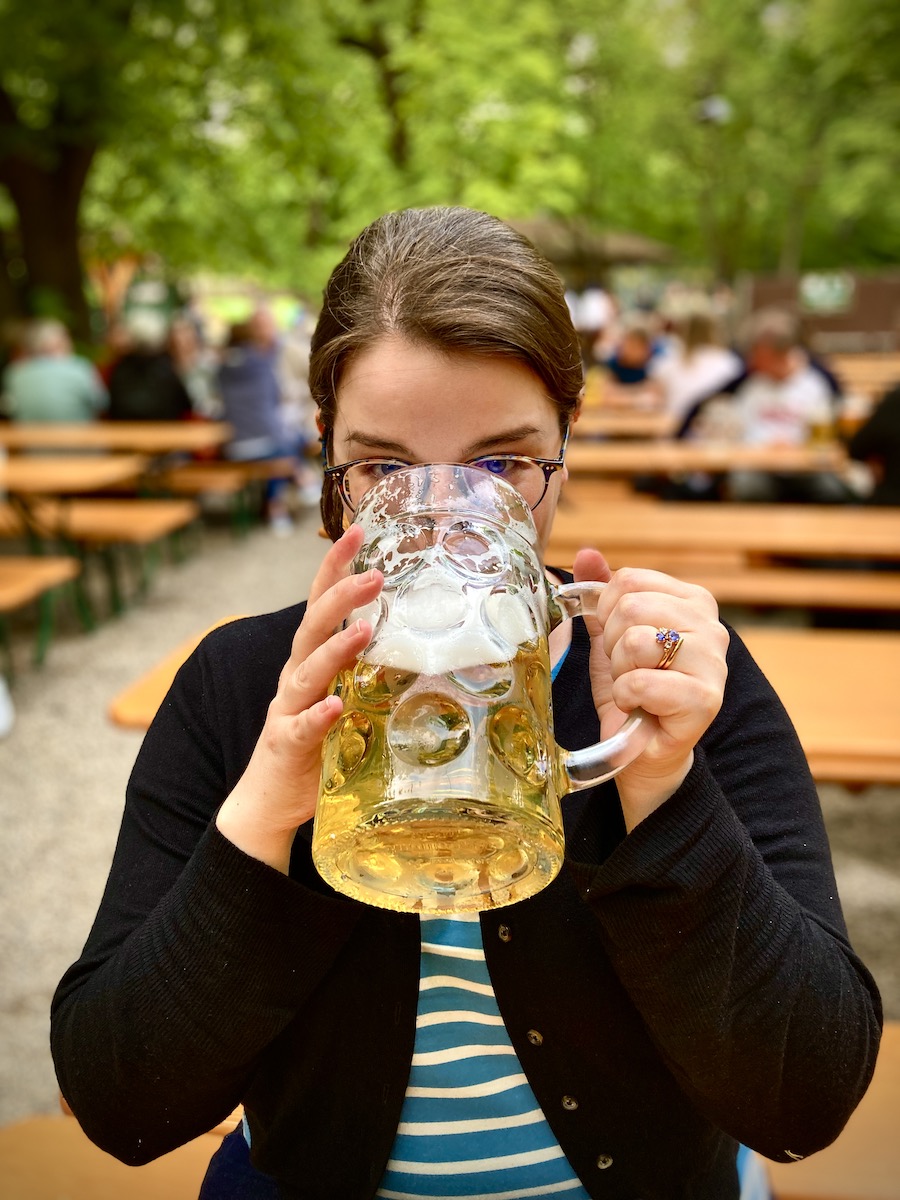
• The Siegestor (Victory Gate) was modeled after the Arch of Constantine in Rome and commissioned by Ludwig I of Bavaria.
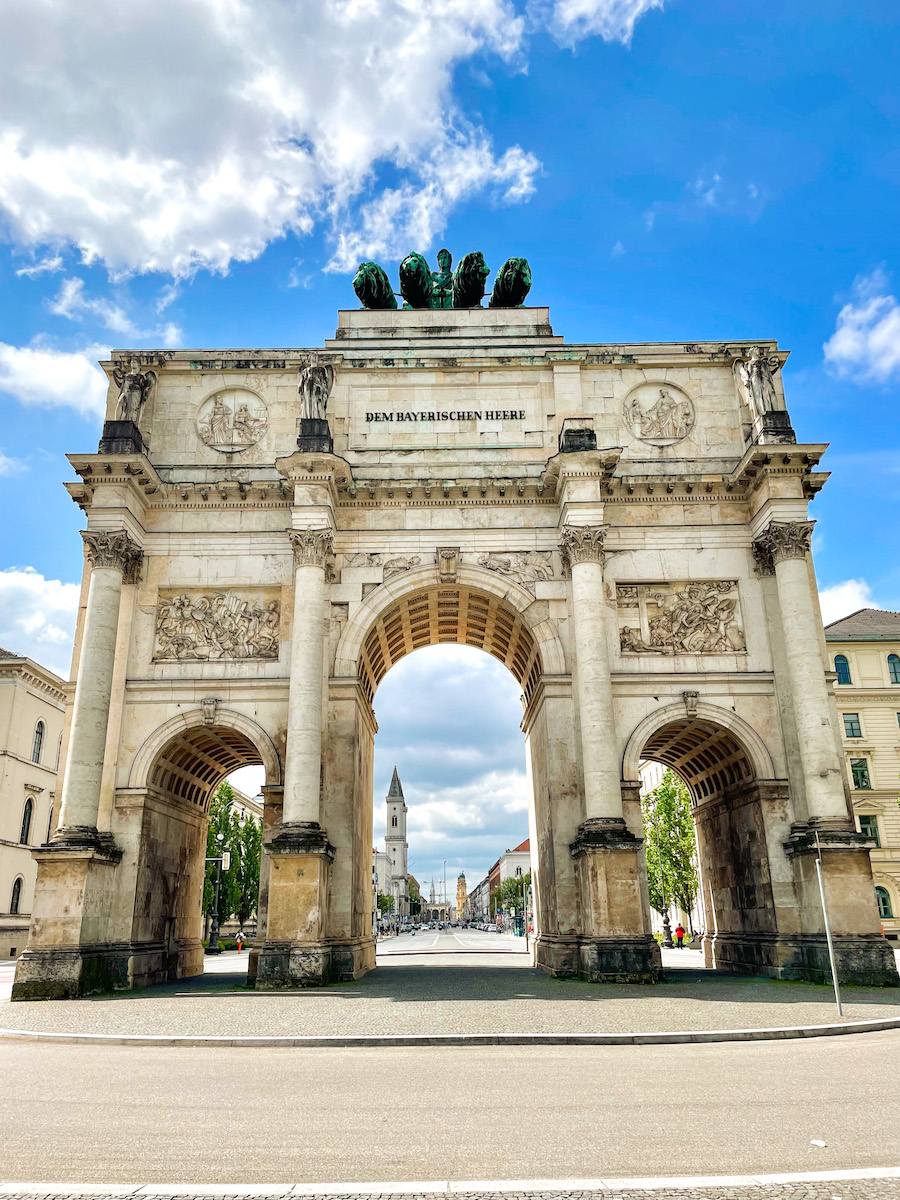
When we visited the arch, the road running along it was inundated with dozens of put-putting Vespas, giving it even more of an Italian aspect.

• Schwabing (east and west of Leopoldstraße, with interesting areas around Kaiserplatz) is the historical artistic and bohemian borough of Munich.
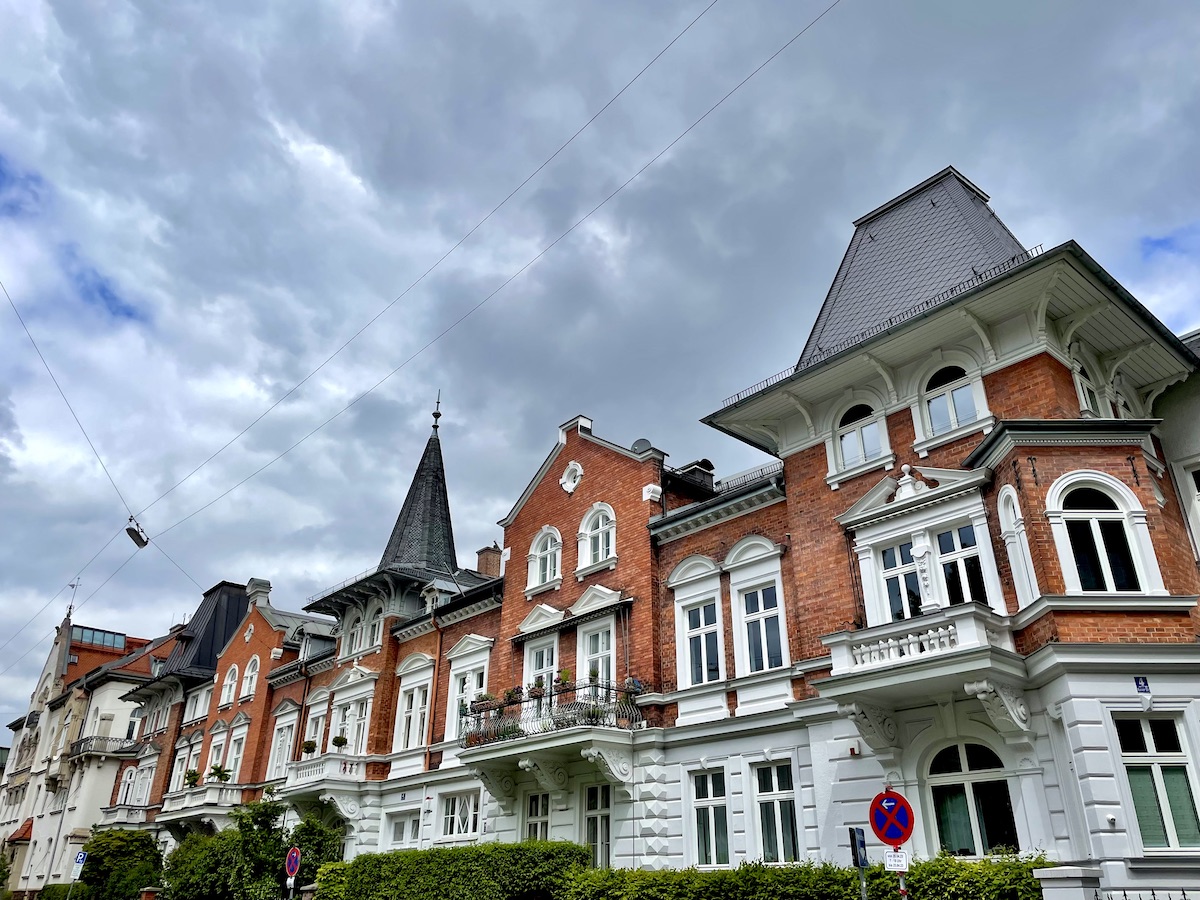
This is a particularly pleasant neighborhood and a great place to live. Artists and authors like Vassily Kandinsky, Thomas Mann, Frank Wedekind, and Rainer Maria Rilke have lived in Schwabing, which was the epicenter of the Jugendstil movement in the early 20th century.
This part of town is home to a few remarkable façades from this period, such as Martiusstraße 5 and 7, and Gedonstraße 4 and 6. The locals are fond of their environment, they’re very attached to their neighborhood life and mostly get around by bike or on foot.
Don’t miss
• Marienplatz
• Frauenkirche and the churches in the old town
• Odeonplatz and the Theatinerkirche
• Glockenbachviertel
• Maximilianstraße
• The Pinakotheks
• The Deutsches Museum and Olympia Park
• Marienplatz: the central square of Munich’s old town is a must-see.

– The Mariensäule (Mary’s Column), is a golden statue of Mary, who is revered as the patron of Bavaria.
– The Neues Rathaus, the Neogothic style new Town Hall. The automatons of the Glockenspiel on the façade come to life every day at 11 AM and noon (and 5 PM from March to October).

– The Altes Rathaus, the old Town Hall, was destroyed during WWII and rebuilt, and now houses a toy museum.

• The Frauenkirche, a late Gothic style red brick cathedral (15th century), which most notably houses the mausoleum of King Ludwig II of Bavaria. Its two towers were topped with copper domes in the 16th century. The domes have become iconic landmarks and are visible from all over the city.
• The many churches in the old town include:
– St. Peter, also known as Alter Peter (Old Peter), our favorite: Munich’s oldest church. Tickets are available to walk up the 300 steps of the bell tower and enjoy a beautiful view of the city,
– the Heilig-Geist-Kirche (Church of the Holy Spirit), is a Gothic church that was remodeled in the Baroque style in the 18th century,

– the Asamkirche, which was built by the Asam brothers in the 18th century, in the Baroque and Rococo style.


Entrance is free, except during mass and prayers.
• Odeonplatz and the Theatinerkirche, a Baroque church built in the 17th century, whose Rococo style yellow façade was finished a century later. The details on the bell towers remind us of octopus tentacles.

• Glockenbachviertel (Gärtnerplatz, Klenzestraße, Hans-Sachs Straße and Westermühlstraße): a young and dynamic neighborhood that is bustling on the weekends, with its many terraces, cafés and restaurants, independent shops, galleries, and theaters. On the Saturday when we explored the area, there were garage sales (Flohmärkte) in every courtyard. The bars and clubs attract a young and hip clientele in the evenings. This alternative neighborhood reminds us of la Krutenau in Strasbourg and Grünerløkka in Oslo.
• The streets around Mariannenplatz and the red brick church of St Lukas, Maximilianstraße (with its luxury boutiques and the Maximilianeum, which is the Bavarian Parliament), and St. Anna Platz (a large square with a church and chestnut trees).

• The Pinakotheks:
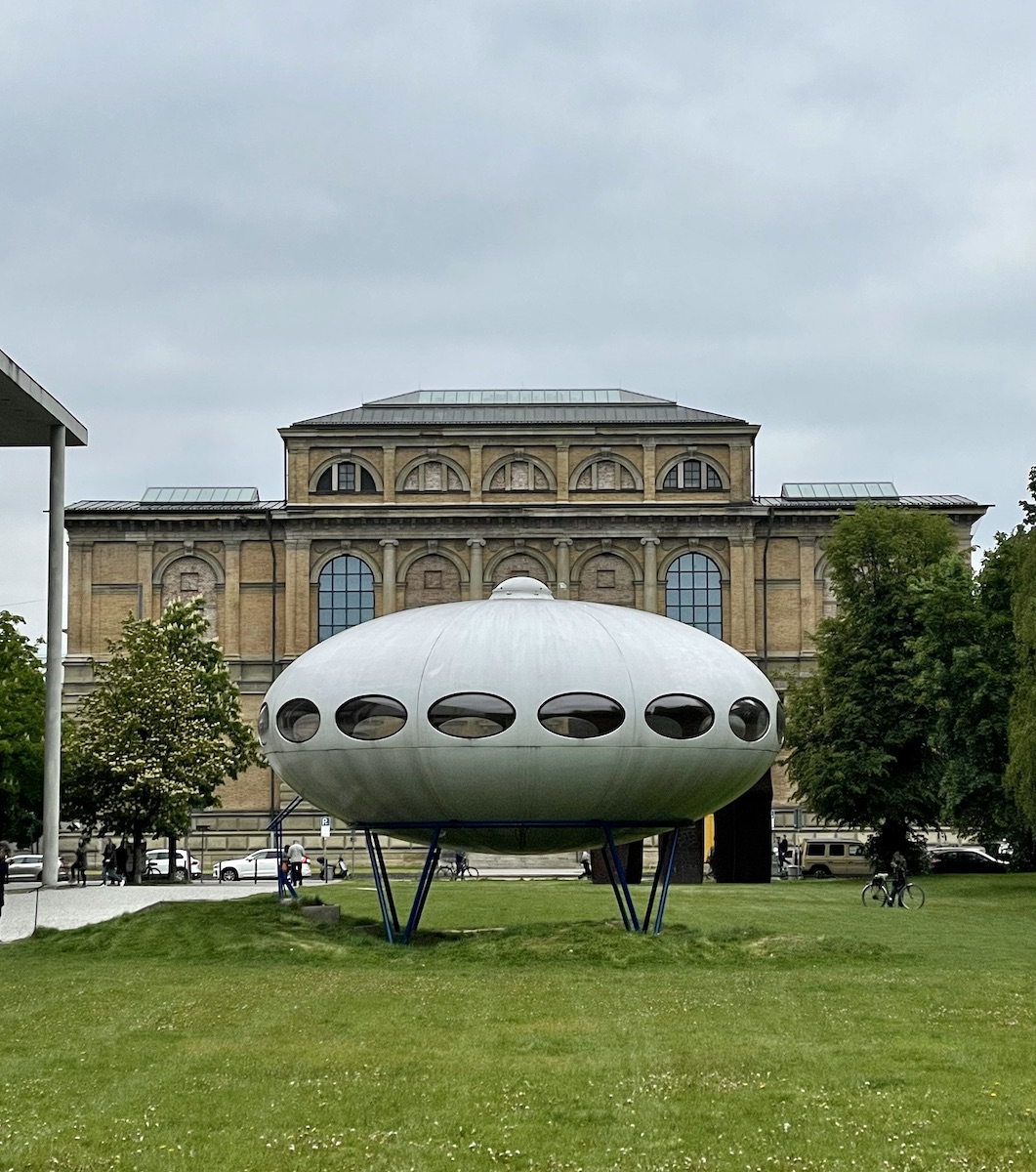
– The Alte Pinakothek houses works of European painters from the Middle Ages to the 18th century, as well as a selection of works from the Neue Pinakothek (closed on Mondays, reduced prince on Sundays: 1€),
– The Neue Pinakothek: closed for renovations until at least 2025,
– The Pinakothek der Moderne is dedicated to art from the 20th and 21st centuries: design, painting, sculpture, architecture, and graphics (closed on Mondays, reduced price on Sundays: 1€).
Our advice: if you plan on visiting both pinakotheks and/or the Schack collection, buy a combo ticket at the first museum.

• The Deutsches Museum: one of the world’s largest museums of science and technology.
• Olympiapark: The Olympic Park built for the 1972 summer Olympics. In this 85-hectare park you will find a 290-meter TV tower (with an observation platform at 185 m), a stadium (with its distinctive canopied roof) that hosts concerts and sports events, a park with an artificial lake, an Olympic swimming pool, a concert hall, an aquarium, and the BMW museum.
Where to eat in Munich ?
• Tavernetta (Hildegardstraße 9): a neighborhood trattoria with very tasty traditional Italian dishes, in true dolce vita fashion.
• Zwickl (Dreifaltigkeitplatz 2, next to the Viktualienmarkt):the perfect place to sample an authentic schnitzel (breaded veal chop), which is one of the region’s traditional dishes.
• Tahdig (Thierschstraße 35): Persian restaurant serving delicious Iranian dishes, with a modern interior and very friendly staff.
• Kaisergarten (Kaiserstraße 34): family friendly beer garden in the middle of Schwabing, combining German Biergarten cuisine with bistronomy. Lovely little shaded terrace.
• Dal Cavaliere (Weissenburger Straße 3): Italian restaurant with rustic decor. Tasty wood-fired pizzas, especially the quattro stagioni.

We will return to Munich to soak up the city’s calming atmosphere, visit Nymphenburg Palace (which we decided to keep for a future trip), the Neue Pinakothek (closed for renovations), and enjoy the sunshine (which was probably off to Morocco for a large part of our long weekend).


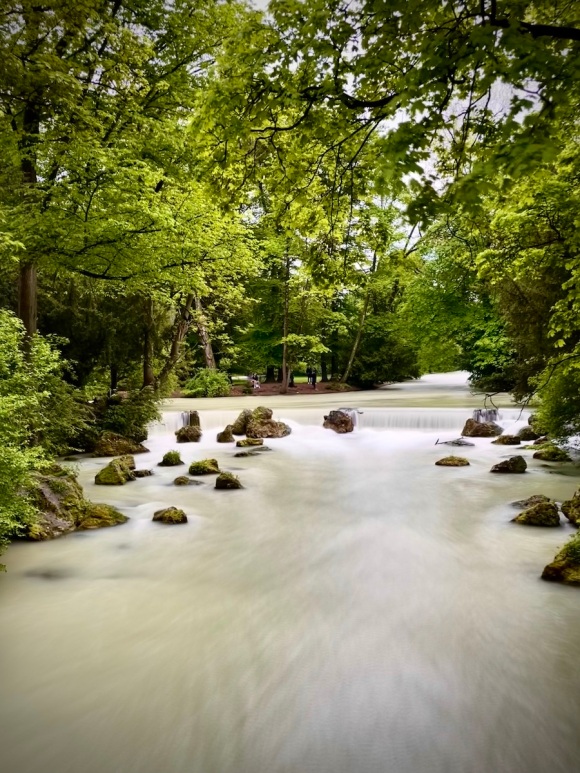




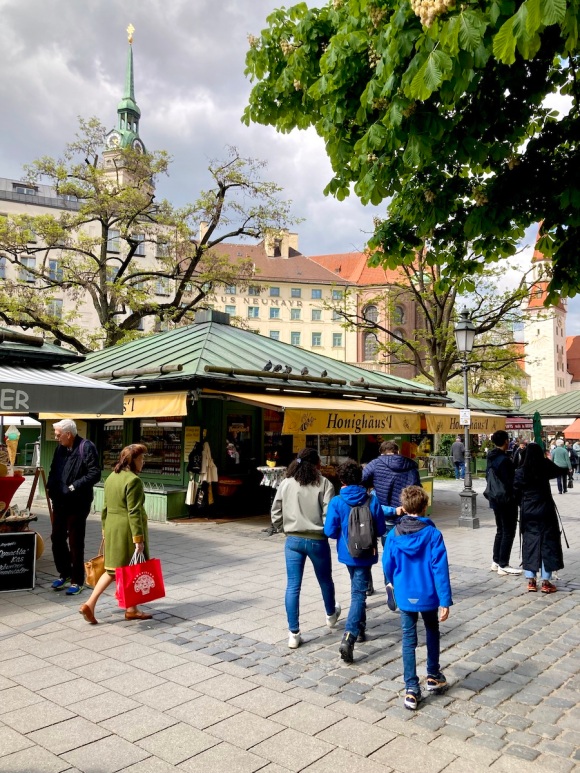
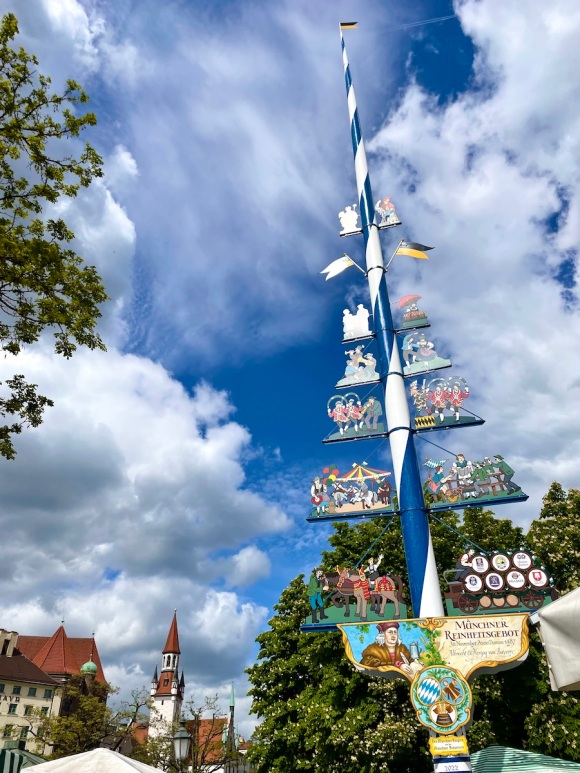













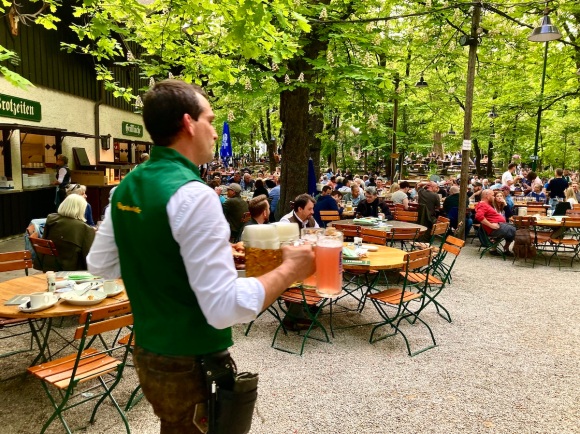
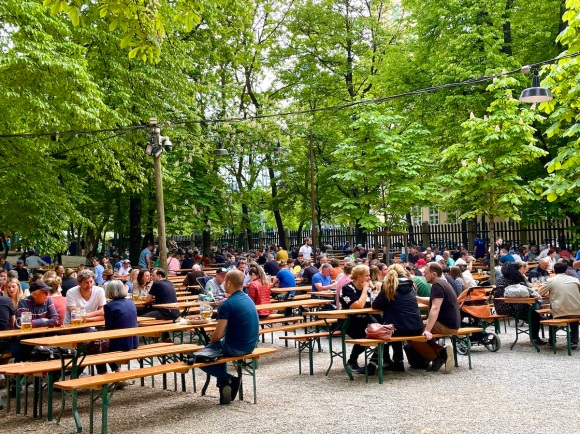

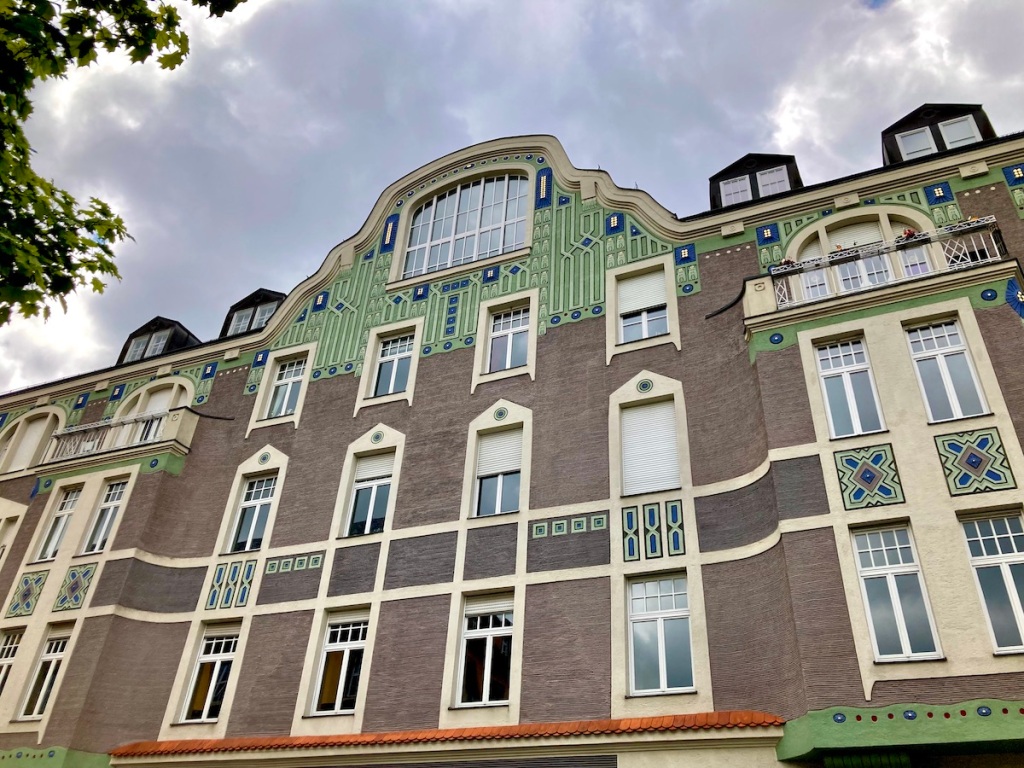




14 replies on “Munich: our favorite discoveries”
This makes me want to go back! We only had one day, so we really only had time for walking around and seeing the Residenz.
LikeLiked by 1 person
Oh my gosh Lyssy, we walked SO much, we didn’t even take public transportation once 😆 it’s definitely worth a few day’s stay!
LikeLike
What a wonderful guide to Munich, one of my favourite cities and one I really must return to soon 🙂
LikeLiked by 1 person
Thank you Hannah!! What was your favorite experience in Munich?
LikeLike
Wow! I’ve only been to Munich in the winter and I’ve never seen so much green! I’ll have to check out the Residenz next time as well 🙂
LikeLiked by 1 person
Oh how cool! Did you go for the Christmas Market then? Was it snowy? ❄️
LikeLiked by 1 person
We were able to line up our trip so we could hit the first day of the Christmas Market before we headed over to Switzerland- last time I missed it by a week! No snow, though, unless you count the slight hail we had.
LikeLiked by 1 person
Oooh that’s cool! Two birds with one stone 😉 yes, we suppose snow is more a question of luck this far south if you’re not in the mountains 🏔️
LikeLiked by 1 person
We were hoping for snow the whole trip and ended up getting some flurries in England of all places
LikeLiked by 1 person
Hah, that’s so funny!
LikeLike
I just live 100 km away and this guide give me since new places to visit! Fantastic pics!
LikeLiked by 1 person
Thank you so much for your comment! We’re very glad we inspired you to explore Munich 🥰
LikeLike
Hi! Loved this post! Munich is on my list and defo inspired to go after this read!!
LikeLiked by 1 person
Oh cool, we’re so glad you enjoyed it! Let us know if you end up going 😄
LikeLiked by 1 person